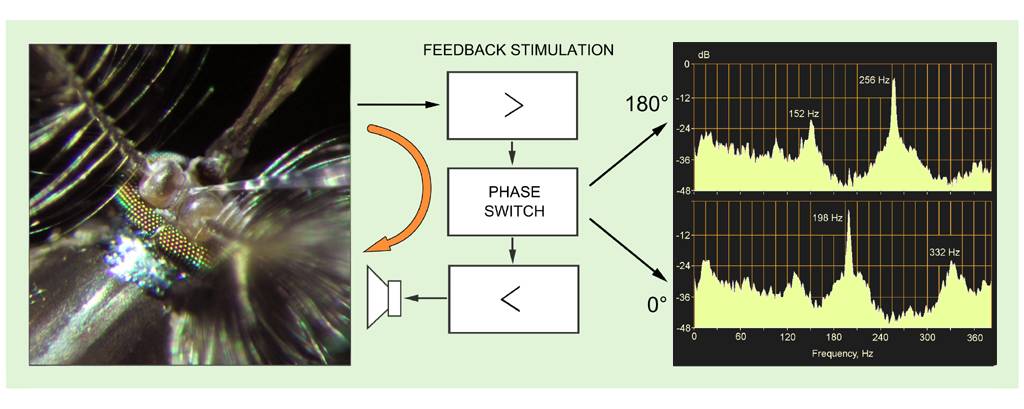
D.N. LAPSHIN, D.D. VORONTSOV
FREQUENCY ORGANIZATION OF THE JONSTON ORGAN IN MALE MOSQUITOES (DIPTERA, CULICIDAE)
The Johnston's organs (JO) of mosquitoes are the most complex
mechanosensitive organs yet found in insects. Previous findings on
the behavior of mosquitoes suggest that, together with exceptional
sensitivity, their auditory system can discriminate frequencies.
Analysis of compound responses of the JO did not provide unambiguous
evidence of such discrimination, nor did it help to find its mechanism.
Using the feedback stimulation method, we measured the tuning frequencies
of the JO sensory neurons. Here we present electrophysiological
evidence that male mosquitoes of Culex pipiens possess at least
eight groups of auditory neurons that are distinct in their frequency
tuning, with individual frequencies ranging from 85 to 470 Hz.
Most of the neurons are tuned to 190-270 Hz, which corresponds to
the difference between male and female flight tones. Axons of the
JO sensory units propagate graded amplified receptor potentials rather
than all-or-none action potentials, are grouped into pairs or
triplets and often respond in anti-phase to each other. Some
features of the mosquito auditory system suggest an analogy
to the retinal mechanisms. Together with our previous findings
on frequency tuning in female mosquitoes of different species, this
study presents evidence in favor of sophisticated frequency analysis
of sound in mosquitoes.
 |